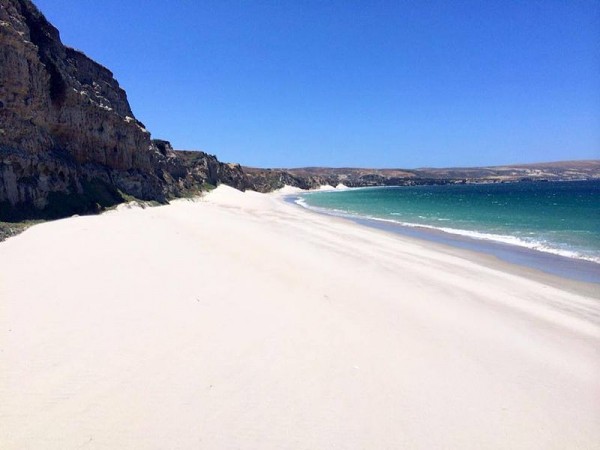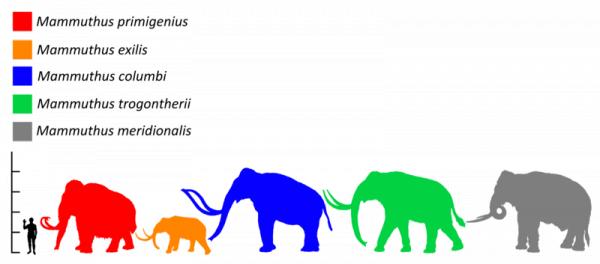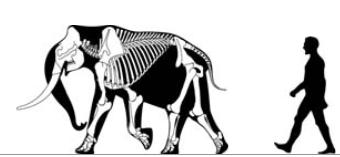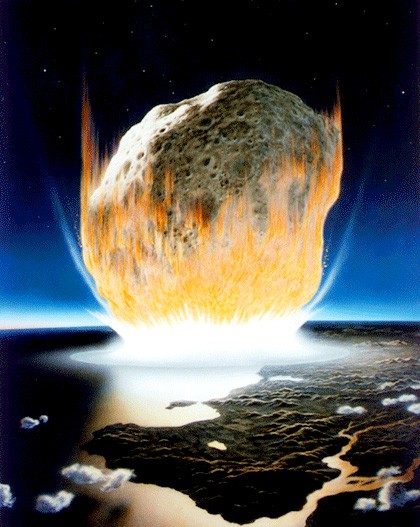The dwarf redwood is now extinct. Traces of this species have been found on Santa Rosa Island, one of the Channel Islands off the coast of the United States off California. This dwarf mammoth descends from the Colombian mammoth and should not be confused with the Wrangel Island dwarf mammoth which descends from the woolly mammoth. The dwarf mammoth is descended from the Colombian mammoth that is so named because it was named after Christopher Columbus. Due to circumstances, such as the availability of food, the mammoth on the island has become smaller and smaller and that is how the dwarf mammoth was created. The eventual lack of enough food and water could be the cause of the extinction.
- Taxonomic Classification
- Santa Rosa Island
- Excavations Santa Rosa Island
- Dwarf mammoth general
- Appearance
- Habitat of the dwarf redwood
- Different habitats Santa Rosea
- The origin of the dwarf mammoth
- Wrangel Island
- Become extinct
- Human
- Devastating fire
- Sea level rise
- Comet impact
- Conclusion
Taxonomic Classification
- Rich: Animalia
- Strain: Chordata
- Class: Mammalia
- Order: Proboscidea
- Family: Elephantidae
- Gender: Mammuthus
- Type: ?? M. exilis
 Santa Rosa Island Beach / Source: Niceley, Wikimedia Commons (CC BY-SA-4.0)
Santa Rosa Island Beach / Source: Niceley, Wikimedia Commons (CC BY-SA-4.0)
Santa Rosa Island
Traces of the existence of a dwarf red deer have been found in the Channel Islands off the coast of California in the United States. The Channel Islands is an archipelago of eight islands measuring 900 square meters. Most of the traces have been found on Santa Rosa Island. Santa Rosa Island is one of the five islands that make up the Channel Islands National Park. The island is 215 square kilometers and has only two inhabitants in 2019.
Excavations Santa Rosa Island
In 1994, 90% of a male dwarf mammoth skeleton was excavated. The male was 50 years old when it died. The position in which the male was found indicates that the beast also died at the place where it was found. Subsequently, 160 other locations with remains of dwarf mammoths were found. In a dune, a skeleton of a mammoth was found that was almost completely intact. Only a few bones, a foot and a tusk are missing. Due to the site, a dune, the skeleton has stayed together nicely.
Dwarf mammoth general
The dwarf mammoth found on Santa Rosa Island is extinct and is descended from the Colombian mammoth that was found in mainland North America. The Colombian mammoth became extinct during the Pleistocene and Holocene. The Pleistocene is a period that lasted from 2.58 million years ago to 11,700 years before Christ. It
Holocene is the period from 11,700 years ago to now. The Pleistocene and the Holocene together form the Quaternary. The Holocene is a relatively warm period compared to the period that preceded it. During the Quaternary, several animal species became extinct because, for example, they could not adapt to changed circumstances, for example due to the rise in sea level.
 Source: FunkMonk, Wikimedia Commons (Public domain)
Source: FunkMonk, Wikimedia Commons (Public domain)
Appearance
The shoulder height of a dwarf mammoth was about 1.72 meters high. In comparison, that of a steppe mammoth could be 4.50 meters high and that of the Colombian mammoth 4 meters. The steppe mammoth was the largest mammoth that ever lived. The dwarf mammoth weighed about 760 kilos compared to the Colombian mammoth which could weigh up to 9,070 kilos.
Habitat of the dwarf redwood
Remains of the dwarf redwood have been found on three of the northern Channel Islands, namely Santa Cruz, Santa Rosa and San Miquel. The northern islands of the Channel Islands consist of four islands that together formed one large island when the sea level was lower. That island was called Santa Rosea. It appears that the dwarf redwood lived on the island until humans appeared on the island. In addition to traces of a dwarf mammoth, traces of humans have also been found, namely the Arlington Springs man. The remains of this human were found to be about 13,000 years old. The pygmy mammoth is said to have lived on the island for a total of 70,000 years. Elephants can swim well, so the mammoths presumably swam to the island when the sea level was lower. Because they then lived in isolation with limited resources, they have become a lot smaller than their relatives on the mainland.
Different habitats Santa Rosea
The dwarf redwood could survive effortlessly in the different habitats on Santa Rosea, both in the higher areas as in the dunes, grassland and steppe. Fossils have been found in all areas on the island. Evidence that they have lived in all these areas is evident from the pollen and plant remains found in the mammoth’s feces. Each habitat has its own specific flora and fauna, type of soil and water. In some cases the mammoth was able to adapt its own habitat, for example by wandering around the mammoths, more grassland was created.
 Source: Asier Larramendi, Wikimedia Commons (CC BY-3.0)
Source: Asier Larramendi, Wikimedia Commons (CC BY-3.0)
The origin of the dwarf redwood
The mammoth has become smaller and smaller due to a number of circumstances. Because the sea level rose, four different islands were created instead of one big one. As a result, there was also less food for the mammoths. In addition, the population increased due to the lack of a natural enemy. In order to survive with the ever-decreasing amount of available food, the mammoth had to become smaller and smaller and so eventually a new species was created, the dwarf mammoth. The evolution from the Colombian mammoth to the dwarf mammoth took about 30,000 years.
Wrangel Island
Wrangel Island is a Russian island in the Arctic Ocean. The island is uninhabited and is part of a protected nature reserve. Remains of a dwarf mammoth have also been found on Wrangel Island. This mammoth probably became extinct around 1,700 BC. The Channel Islands dwarf redwood is not to be confused with the Wrangel Island dwarf redwood. The dwarf redwood from Wrangel Island is a descendant of the woolly mammoth.
Become extinct
It is unclear why the dwarf redwood became extinct. Is it man’s fault? Was it climate change, was it a major fire that raged there or a combination of all those factors?
Human
The mammoth disappears the moment we know for sure that people also lived on Santa Rosa Island. Remains of two mammoth skulls have been found next to a fire pit. Yet none of this is proof that the mammoth is extinct due to man. It is true that human behavior has a greater effect on islands than on the mainland. In any case, the theory that the extinction was caused by humans alone is not confirmed by the finds.
Devastating fire
There is evidence of a devastating fire in the northern islands. The fire has had a significant impact on flora and fauna and it coincides with the time of extinction of the dwarf redwood.
 Meteorite impact / Source: Public domain, Wikimedia Commons (PD)
Meteorite impact / Source: Public domain, Wikimedia Commons (PD)
Sea level rise
Before sea levels began to rise, the island was approximately 1,900 square kilometers in size. Due to the rise in the sea level, the space for the mammoth became smaller and smaller. The large island of Santa Rosea was divided into four smaller islands and Santa Rosa Island was one of the largest of the resulting islands. It became a lot more difficult for the mammoth to survive due to the limited availability of food and water.
Comet impact
A controversial theory for the dwarf mammoth extinction is that it was caused by a comet impact. Due to the impact, there is a sudden change in habitat and available food that an animal like the dwarf mammoth cannot adapt to quickly enough and therefore eventually dies out. As yet, there is not enough evidence to support this theory.
Conclusion
Whether the disappearance of the Channel Islands dwarf mammoth was caused by humans or a major devastating fire, perhaps also caused by humans, or by sea level rise or a comet impact, in all cases the result is that the space for the dwarf mammoth became smaller and the available food less and less. In the end, the mammoth was unable to adapt to the changed circumstances.








